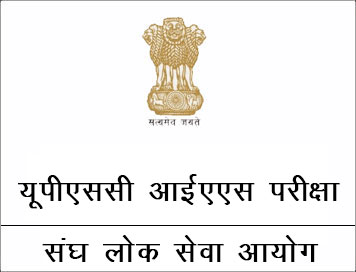
संघ लोक सेवा आयोग सिविल सेवा - मुख्य परीक्षा
(Download) UPSC IAS Mains Exam Paper - 2017 : रसायन विज्ञान (Paper - 2)
रसायन विज्ञान
(प्रश्न पत्र - II)
निर्धारित समय : तीन घंटे
अधिकतम अंक : 250
प्रश्न-पत्र सम्बन्धी विशेष अनुदेश
कृपया प्रश्नों के उत्तर देने से पूर्व निम्नलिखित प्रत्येक अनुदेश को ध्यानपूर्वक पढ़े :
इसमें आठ (8) प्रश्न हैं जो दो खण्डों में विभाजित हैं तथा हिन्दी और अंग्रेज़ी दोनों में छपे हैं ।
परीक्षार्थी को कुल पाँच प्रश्नों के उत्तर देने हैं।
प्रश्न संख्या 1 और 5 अनिवार्य हैं तथा बाकी में प्रत्येक खण्ड से कम-से-कम एक प्रश्न चुनकर किन्हीं तीन प्रश्नों के उत्तर दीजिए । प्रत्येक प्रश्न/भाग के अंक उसके सामने दिए गए हैं ।
प्रश्नों के उत्तर उसी प्राधिकृत माध्यम में लिखे जाने चाहिए जिसका उल्लेख आपके प्रवेश-पत्र में किया गया है, और इस माध्यम का स्पष्ट उल्लेख प्रश्न-सह-उत्तर (क्यू.सी.ए.) पुस्तिका के मुख-पृष्ठ पर निर्दिष्ट स्थान पर किया जाना चाहिए । प्राधिकृत माध्यम के अतिरिक्त अन्य किसी माध्यम में लिखे गए उत्तर पर कोई अंक नहीं मिलेंगे।
प्रश्नों में शब्द सीमा, जहाँ विनिर्दिष्ट है, का अनुसरण किया जाना चाहिए ।
जहाँ आवश्यक हो, आरेख / चित्र उत्तर के लिए दिए गए स्थान में ही दर्शाइए ।
प्रश्नों के उत्तरों की गणना क्रमानुसार की जाएगी । यदि काटा नहीं हो, तो प्रश्न के उत्तर की गणना की जाएगी चाहे वह उत्तर अंशतः दिया गया हो । प्रश्न-सह-उत्तर पुस्तिका में खाली छोड़ा हुआ पृष्ठ या उसके अंश को स्पष्ट रूप से काटा जाना चाहिए ।
खण्ड़ A
Q1. (a) निम्नलिखित उदाहरणों को ऐरोमैटिक, प्रति-ऐरोमैटिक एवं अन-ऐरोमैटिक में वर्गीकृत कीजिए । साथ ही अपने उत्तर को उचित भी सिद्ध कीजिए।

(b) उत्पादों A और B की संरचनाएँ लिखिए तथा इन रूपांतरणों [(i) और (ii)] के प्रत्येक मुख्य/गौण उत्पादों का उल्लेख और औचित्य-प्रतिपादन कीजिए।

(c) निम्नलिखित अभिक्रिया के उत्पाद को लिखिए और इसके बनने के क्रियाविधिक मार्ग को चित्रित कीजिए।

(d) C तथा D की संरचनाओं को बताइए और उनके बनने का उल्लेख कीजिए ।

(e) निम्नलिखित अभिक्रियाओं में से प्रत्येक के उत्पाद की संरचना को उपयुक्त त्रिविम-रसायनी निष्कर्ष के द्वारा लिखिए और अपने उत्तरों को एफ.एम.ओ. सिद्धान्त की सहायता से उचित सिद्ध कीजिए।

Q2. (a) प्रत्येक में अंकित कार्बन [*] की स्थिति दर्शाते हुए, E से H तक की संरचनाओं को प्रस्तुत कीजिए ।
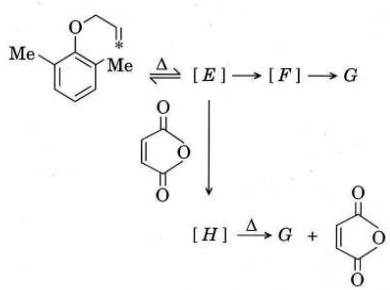
(b) 3,5-डाइमेथिल-4-नाइट्रोफीनॉल और 2,6-डाइमेथिल-4-नाइट्रोफीनॉल में से कौन-सा एक अधिक अम्लीय है और क्यों ?
(c) I से K तक की संरचनाओं को लिखिए । नीचे उल्लिखित रूपांतरणों के एक चरण पर पुनर्विन्यास हो रहा है । उसका नाम लिखिए और उसके संगत क्रियाविधि बताइए ।

(d) निम्नलिखित अभिक्रियाओं में से प्रत्येक के उत्पाद का पूर्वानुमान कीजिए और प्रत्येक रूपांतरण की क्रियाविधि लिखिए ।

Q3. (a) क्या होता है जब 2,4-पेन्टाडाइऑन की अभिक्रिया MeMgl के एक तुल्यांक से होती है ? आप उल्लिखित डाइऑन को 2,4-हेक्साडाइऑन में कैसे रूपांतरित कर सकते हैं ?
(b) दो एकसमान ऐल्किल समूहों को रखने वाले तृतीयक ऐल्कोहॉल को बनाने की विधि लिखिए। साथ ही प्राथमिक, द्वितीयक और तृतीयक ऐल्कोहॉलों को विभेदित करने वाली एक विधि लिखिए ।
(c) L से N तक की त्रिविम संरचनाएँ लिखिए तथा N के विशिष्ट घूर्णन पर टिप्पणी कीजिए । आरम्भिक ऐल्कोहॉल का विशिष्ट घूर्णन + x है ।
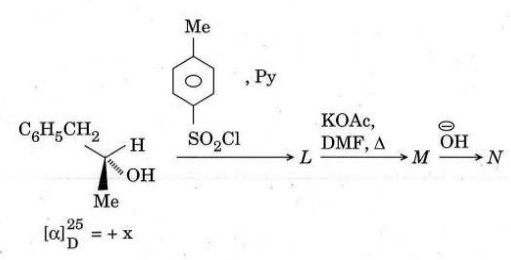
(d) निम्नलिखित रूपांतरणों में से प्रत्येक के उत्पाद/उत्पादों की संरचना लिखिए और प्रत्येक अभिक्रिया का नाम लिखिए ।

(e) निम्नलिखित अभिक्रिया के उत्पाद की संरचना लिखिए और क्रियाविधि को चित्रित कीजिए ।
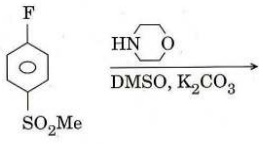
Q4. (a) निम्नलिखित अभिक्रियाओं के अनुक्रम के उपरान्त प्राप्त अंत्य उत्पाद का पूर्वानुमान कीजिए और साथ ही सदृश्य सत्याभासी क्रियाविधिक मार्ग भी सुझाइए ।

(b) क्रियाविधि के साथ उत्पाद/उत्पादों का पूर्वानुमान कीजिए और अपने उत्तर को उचित सिद्ध कीजिए।
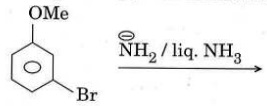
(c) निम्नलिखित रूपांतरणों के लिए अभिकर्मकों के नाम और अभिक्रिया (i) की क्रियाविधि लिखिए ।
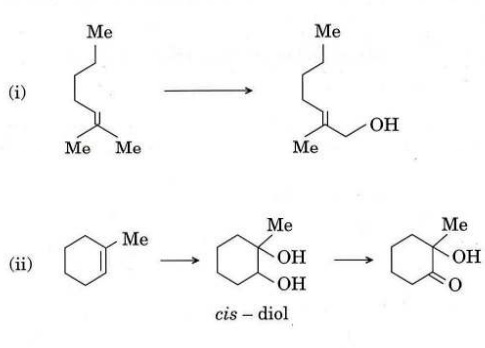
(d) उत्पाद/उत्पादों का पूर्वानुमान कीजिए और अभिक्रियाओं की त्रिविम-रसायनी आवश्यकता की विवेचना करते हुए अपने उत्तर का औचित्य सिद्ध कीजिए ।
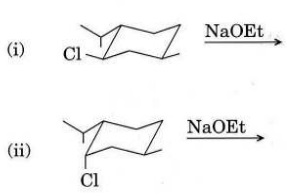
(e) निम्नलिखित रूपांतरणों में से प्रत्येक के लिए आवश्यक विशिष्ट अभिकर्मकों के नाम लिखिए । 'त्रिविम-विशिष्ट (स्टीरियोस्पेसिफिक) तथा ‘त्रिविम-वरणात्मक (स्टीरियोसेलेक्टिव) में से कौन-सा एक प्रत्येक अभिक्रिया के लिए उपयुक्त होगा ?

खण्ड़ B
Q5. (a) किस कारण से हाइड्रोजन की संगठित 1,3-सिग्माट्रॉपिक शिफ्ट ऊष्मीय तौर पर वर्जित है, व्याख्या कीजिए तथा सिग्माट्रॉपिक पुनर्विन्यास अभिक्रियाओं के लिए वुडवर्ड-हॉफमान वरण नियम प्रस्तुत कीजिए।
(b) आप निम्नलिखित अभिकारक को कैसे दो-चरणों वाले प्रक्रम द्वारा उत्पाद में रूपांतरित करेंगे ? साथ ही क्रियाविधि भी बताइए ।

(c) निम्नलिखित अभिक्रिया के लिए उत्पाद लिखिए एवं इसके बनने की क्रियाविधि बताइए कि किस प्रकार का योग c= ०( आबंध पर होगा ।।

(d) एक रेजियो विशिष्ट (रेजियो स्पेसिफिक) अभिक्रिया की परिभाषा दीजिए। आप किस प्रकार से ऐनिलीन को p-फेनिलीन डाइऐमीन में परिवर्तित करेंगे ?
(e) निम्नलिखित यौगिकों के युगलों को IR स्पेक्ट्रमिकी के उपयोग से आप कैसे विभेदित कर सकते हैं ?
(i) सैलिसिलिक अम्ल एवं p-हाइड्रॉक्सी बेन्ज़ोइक अम्ल
(ii) प्रोपिऑन-ऐल्डिहाइड एवं ऐसीटोन
Q6. (a) निम्नलिखित अभिक्रियाओं के उत्पादों का पूर्वानुमान कीजिए ।

(b) (i) पेन्टाडाइ-ईनिल ऋणायन, तथा
(ii) पेन्टाडाइ-ईनिल धनायन के तापीय चक्रीकरण का त्रिविम-रसायनी मार्ग क्या होगा ?
(c) निम्नलिखित अभिक्रियाओं के उत्पादों को लिखिए ।

(d) यौगिक A तथा B के प्रकाश-विकार्बनीकरण (फोटोडिकार्बोनिलेशन) के परिणामस्वरूप I तथा II (A से) और III तथा IV (B से) बनते हैं। इनकी संरचनाओं को बताइए ।

(e) न्यूक्लियोसाइडों एवं न्यूक्लियोटाइडों की संरचनाएँ दीजिए और साथ ही डी.एन.ए. और आर.एन.ए. की प्राथमिक (मौलिक) संरचनाओं की विवेचना कीजिए ।
Q7. (a) (i) निम्नलिखित प्रकाश-रसायनिक अभिक्रिया के लिए मध्यवर्ती तथा संभावित उत्पादों को लिखिए ।

(ii) 1-ब्रोमोप्रोपेन तथा 2-ब्रोमोप्रोपेन के लिए आप कितने एच. एन.एम.आर. सिग्नलों की अपेक्षा करते हैं ? उनके विपाटन प्रतिरूप का विवरण दीजिए।
(iii) IR स्पेक्ट्रमिकी का उपयोग करके निम्नलिखित यौगिकों में आप कैसे भेद करेंगे ? इनमें से कौन cm-1 में अधिक तरंग संख्या (वेव नंबर) का अवशोषण करेगा, और
क्यों ?
.jpg)
(b) यू.वी. स्पेक्ट्रमी अध्ययन का उपयोग करके स्टिलबीनों के सिस एवं ट्रान्स समावयवों (आइसोमरों) के बीच आप कैसे भेद करेंगे ? व्याख्या कीजिए।
(c) प्राकृतिक रबर, पॉलिस्टाइरीन और टेफ्लॉन की पुनरावर्ती इकाइयों की संरचनाएँ लिखिए । टैरोलीन तथा पी.वी.सी. (PVC) को आप कैसे बनाएँगे ? ।
Q8. (a) निम्नलिखित विषमचक्रीय यौगिकों के संश्लेषण के लिए उपयुक्त आरंभिक यौगिकों और संरचनाओं का सुझाव दीजिए ।

.jpg)
(b) निम्नलिखित यौगिकों के लिए M+ के शिखरों तथा द्रव्यमान स्पेक्ट्रमी खंडन का पूर्वानुमान कीजिए ।

(c) निम्नलिखित अभिक्रिया में उत्पाद को पहचानिए और उत्पाद के निर्माण की क्रियाविधि का वर्णन कीजिए ।

(d) एक अज्ञात कार्बनिक यौगिक जिसका आण्विक सूत्र CH,00, है, निम्नलिखित स्पेक्ट्रमी आँकड़े दर्शाता है.
UV : 270 nm; IR : 1680 cm-1
1H NMR : 67:6 (2H, d, J = 8 Hz), 6-9 (2H, d, J = 8 Hz), 3-9 (3H, s), 2-0 (3H, s).
यौगिक की संरचना को निगमित कीजिए।
(e) निम्नलिखित यौगिकों को आप कैसे बनाएँगे ?


NEW! UPSC, IAS परीक्षा संपूर्ण अध्ययन सामग्री (प्रारंभिक, मुख्य, साक्षात्कार COMBO) - Hindi Medium